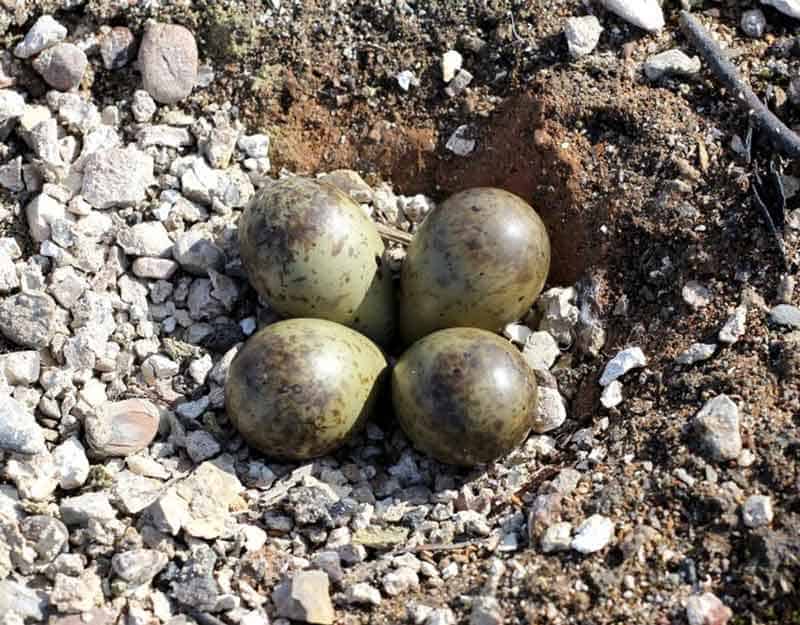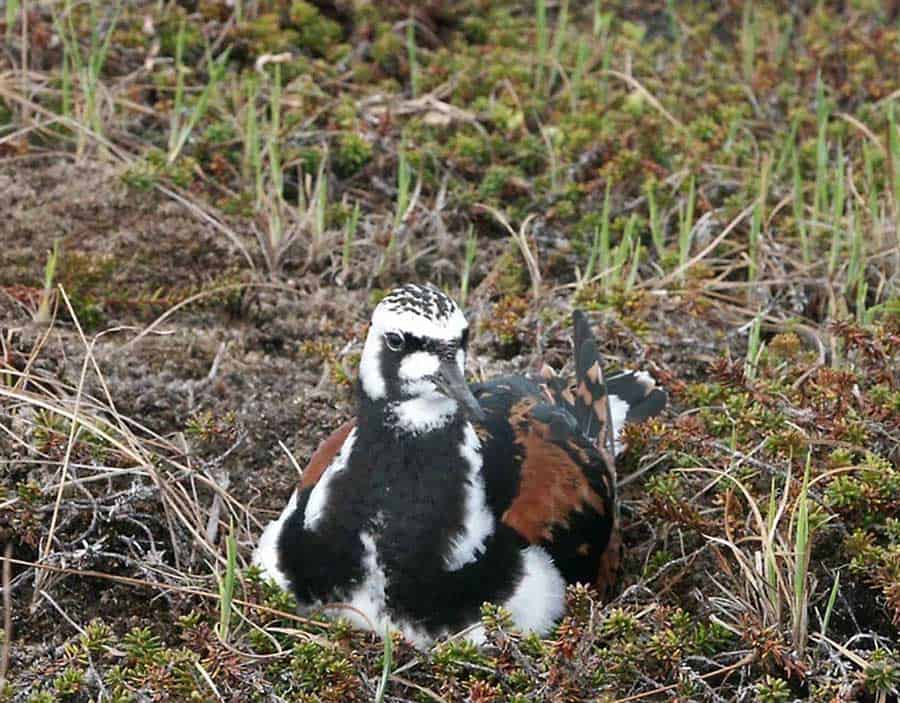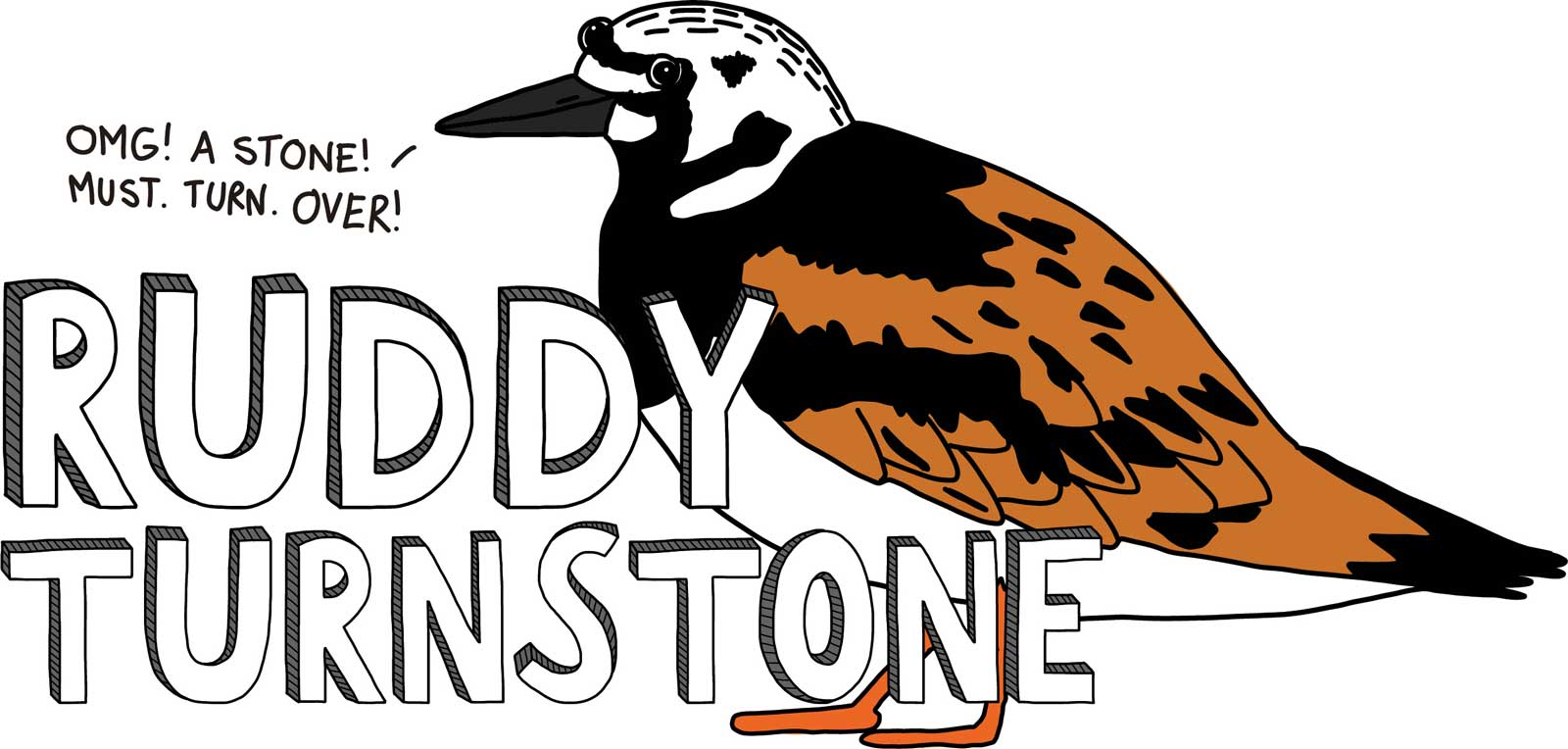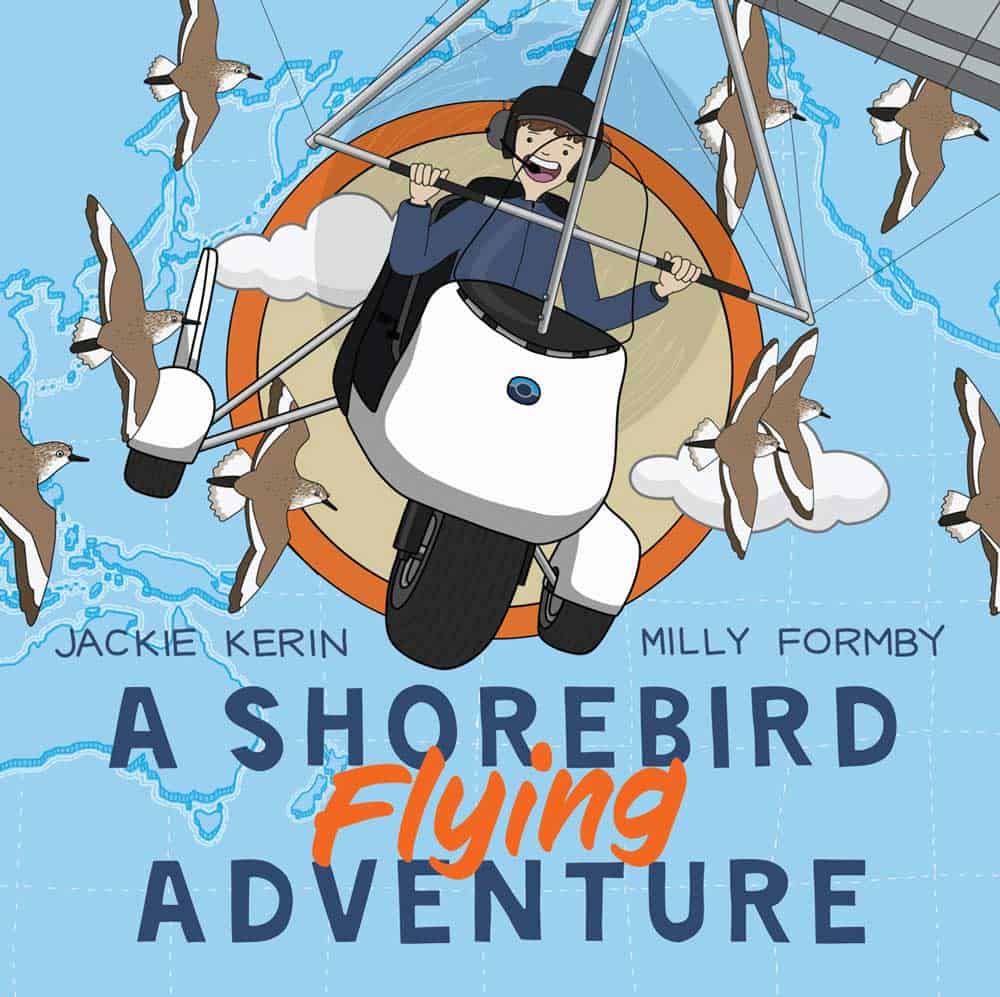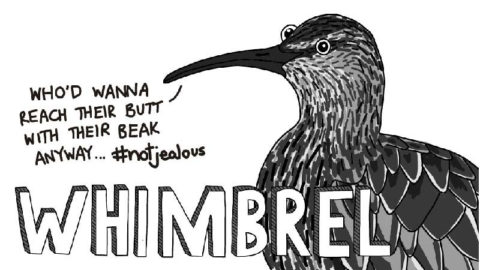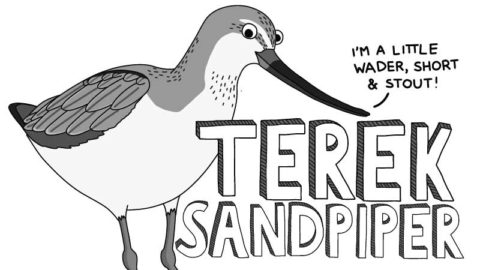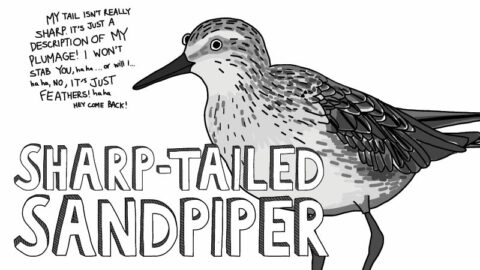The boldly patterned plumage of the Ruddy Turnstone, Arenaria interpres, make it one of the easiest waders to identify in the field. A dark, wedge-shaped bill and short, orange-red legs give this bird a stocky appearance that is unmistakable.
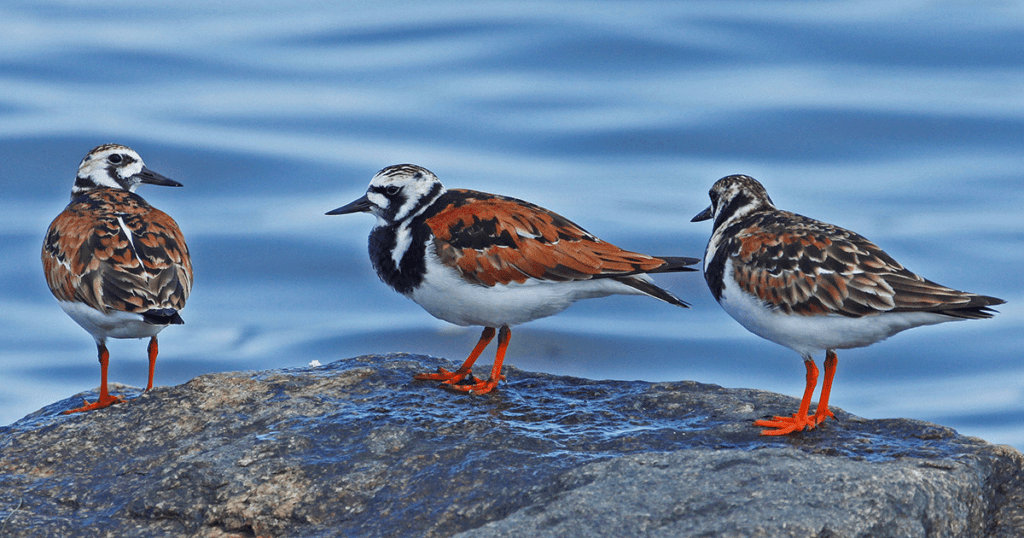
Non-breeding adults have a brown and grey head patterned with black. Their breast is white with pale patches and black or brown markings. During the breeding season, their brown upperparts become chestnut mottled with black. Black and white accentuates the head, neck and breast.
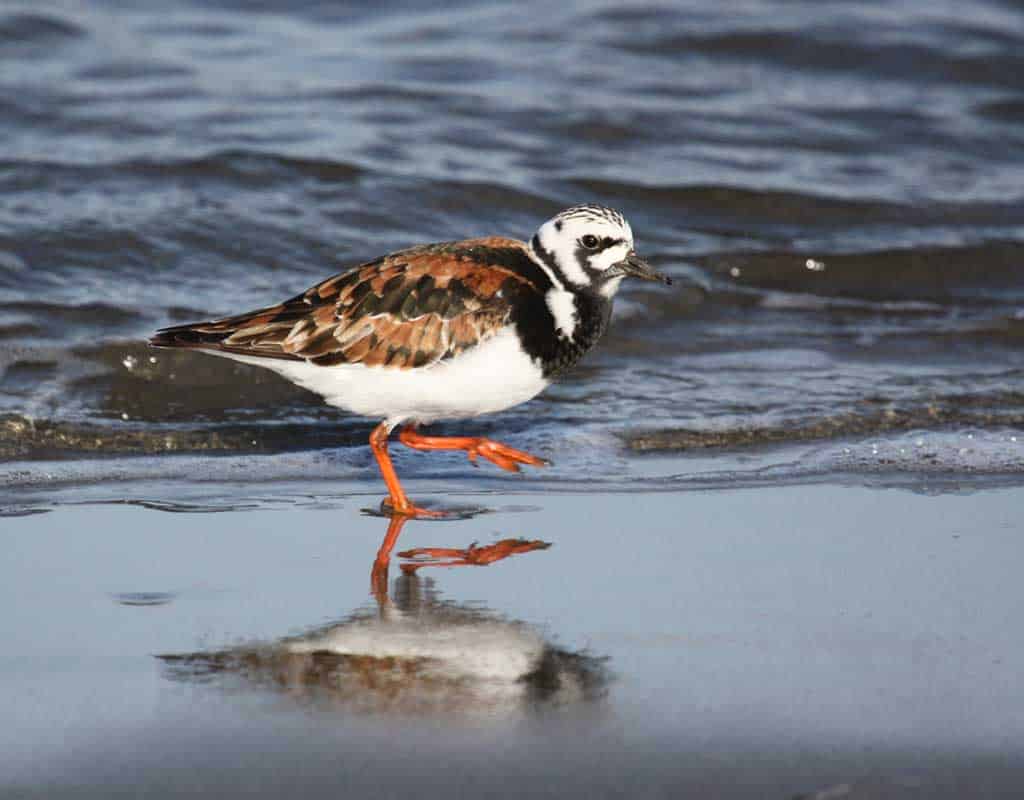
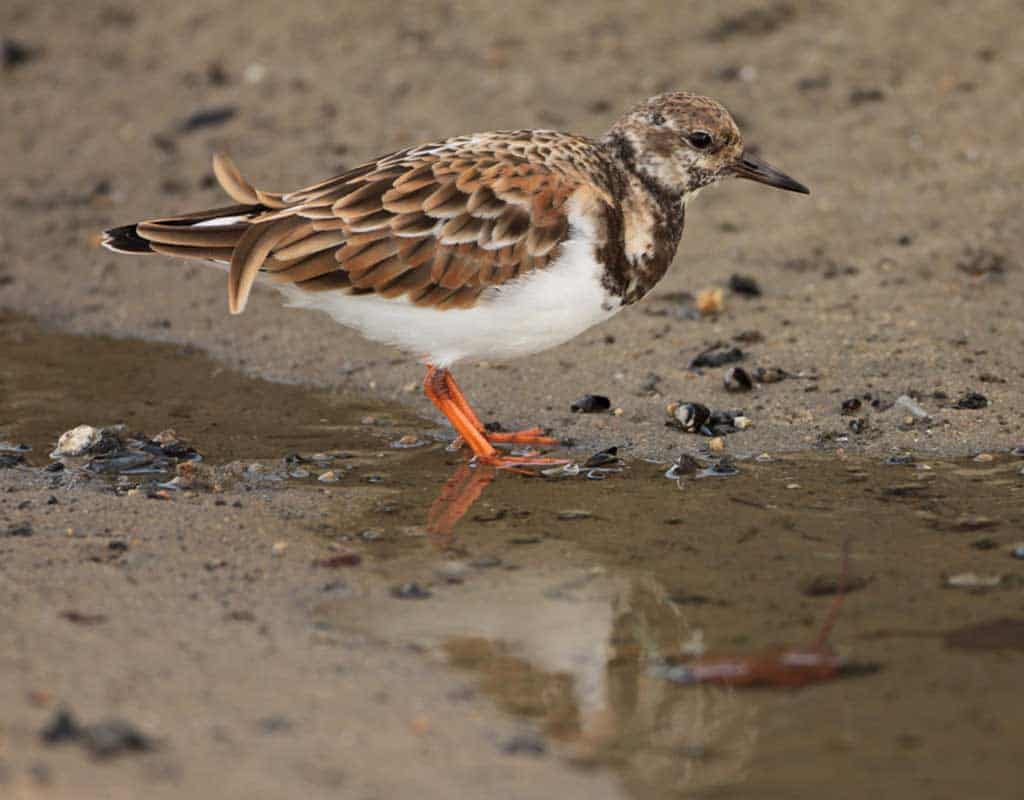
Although mostly similar in appearance, males typically display a brighter breeding plumage than females, and a slightly paler non-breeding plumage. Juveniles are generally duller in colour, with extensive pale brown markings over their head and shoulders, as well as upper body feathers with pale fringes.
When in flight, look out for a white stripe down their back, a white rump, black tail stripe and white stripes on the wings!
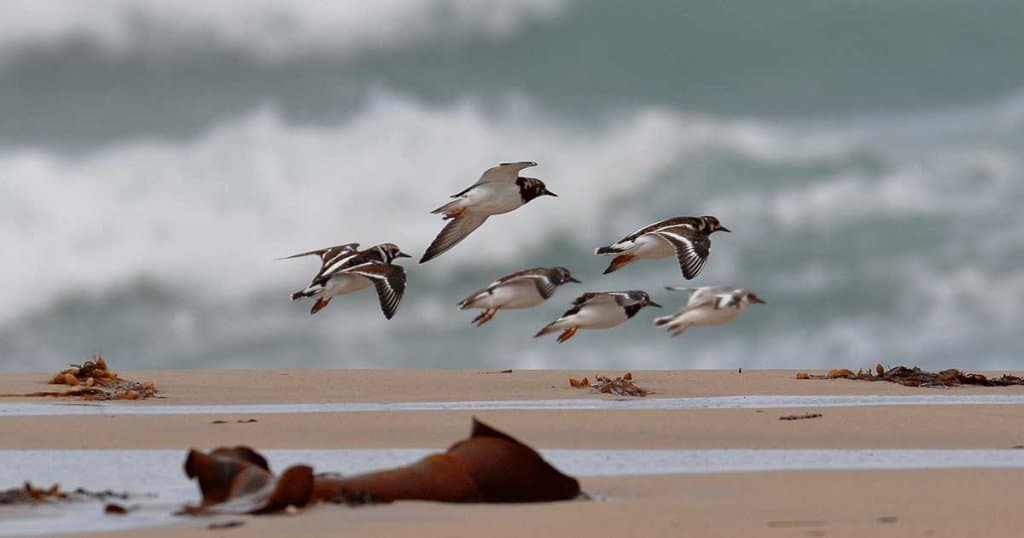
As their name implies, the Ruddy Turnstone is renowned for using their bill to turn over stones, shells, rocks and seaweed when searching for food. They mostly eat crustaceans, worms, spiders, insects and molluscs but are also known to consume bird eggs, fish, human food scraps and carrion.
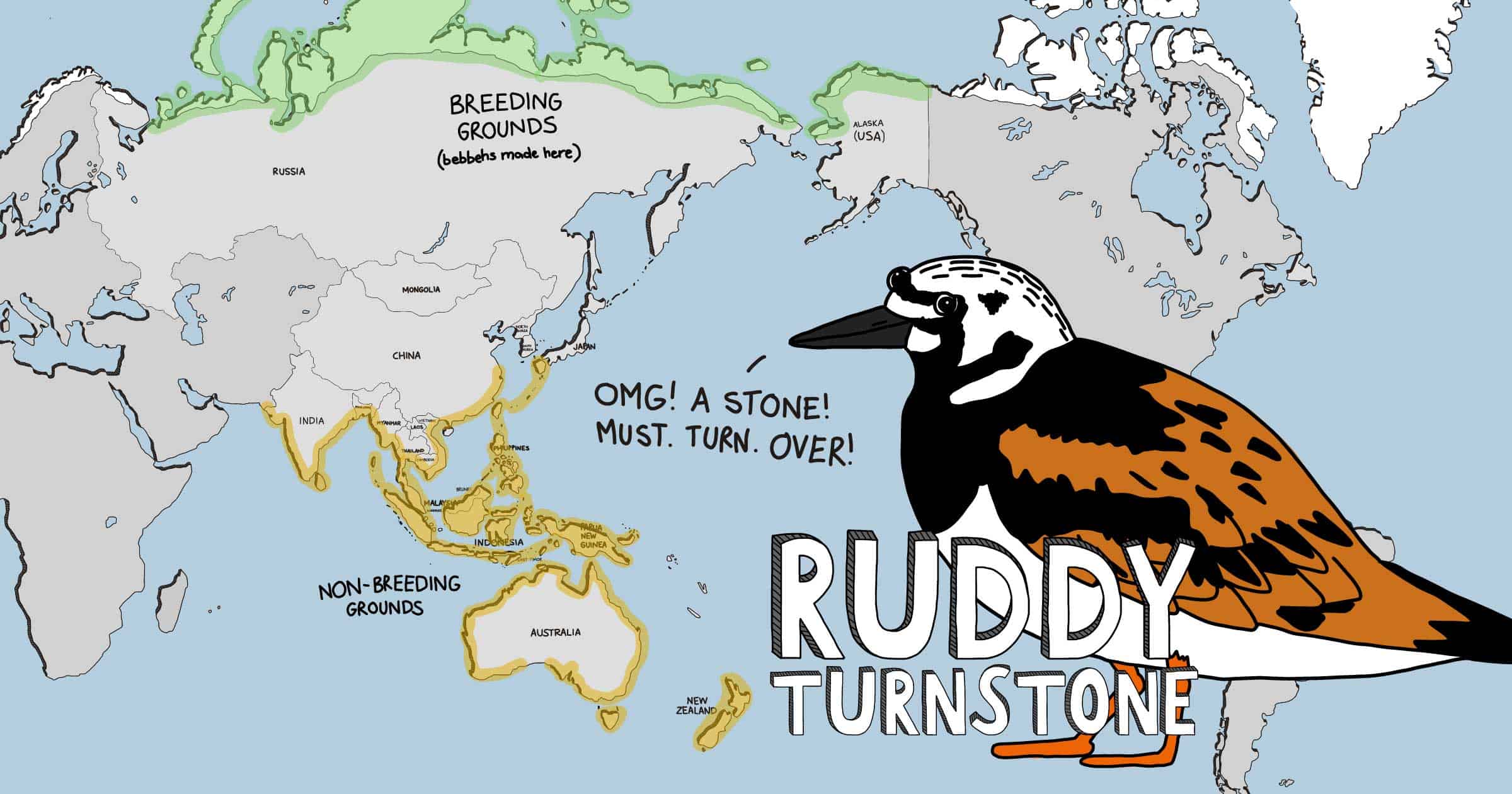
In non-breeding season, the Ruddy Turnstone is found in coastal locations all around the world, including Australia, with some sporadic inland recordings. They tend to frequent exposed rock coast lines and reefs, as well as rocky beaches and shallow tidal pools. A number of other habitats occupied by Ruddy Turnstones include sand beaches, estuaries, exposed seagrass beds and mudflats.
Ruddy Turnstones breed in the Northern Hemisphere, in sites along the coats of Asia, Europe, and North America. These sites are normally north of 60 degrees latitude, making the Ruddy Turnstone one of the most northerly breeding shorebirds.
Females build the nests by lining small depressions using surrounding vegetation, either concealed and with shelter or out in the open. Two to four olive-green or buff speckled eggs are incubated mostly by the female and the chicks cared for by both males and females.
